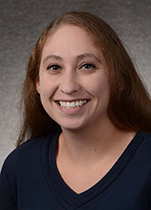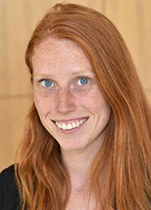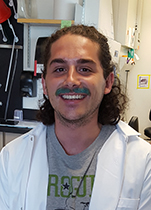Raul Torres, PhD
Professor
Department of Immunology & Microbiology
University of Colorado Anschutz School of Medicine

We have a long-standing interest in investigating the mechanisms by which B lymphocytes develop and subsequently mount antibody responses to foreign antigens and pathogens. In the recent past we have particularly focused on understanding how the distinct B cell populations that exist in humans and mice act in concert to provide humoral immunity. To address these issues, we rely on molecular, genetic and biochemical in vitro and in vivo approaches that often rely on genetically-engineered mouse models. More recent work in our lab has revealed that a bioactive lipid, lysophosphatidic acid (LPA), is able to suppress signaling by both B and T lymphocyte antigen receptors and specifically upon engagement with the LPAR5 receptor. Furthermore, we have shown that LPAR5-deficient B cells mount heightened antibody responses and LPAR5-deficient tumor-specific CD8 T cells are better at controlling tumor growth compared to wild type cells. Below are a couple of the research projects currently underway in our lab.
Autoreactive B cell contribution to humoral immunity
The ability of an antibody to recognize its cognate antigen has historically been referred to as “lock-and-key” to imply exquisite specificity. However, both healthy humans and wild type mice harbor mature B cells with B cell antigen receptors (BCRs) that have multiple specificities, including specificity for self. Intriguingly, many of these auto-reactive specificities are encoded by evolutionarily conserved IGVH gene segments; although why the immune system has evolved and maintained germline encoded self-specificities remains speculative. Furthermore, these auto-reactive BCRs can also recognize epitopes on pathogens (i.e., are poly-reactive) and have been documented to mount protective antibody responses against both bacteria and viruses, including HIV. In contrast to this protective role, poly-/auto-reactive B cell numbers are also elevated in autoimmune individuals and the antibodies produced by these cells contribute to autoimmunity. Thus, a major current project in our lab is to understand how these auto-reactive B cells escape B cell tolerance to mount antibody responses or, conversely, contribute to autoimmunity.
Tumor-derived LPA suppression of CD8 T cell tumor immunity
It is now clear that tumors promote a microenvironment that specifically suppresses CD8 T cell immunity and therapeutics that interfere with this immune suppression have shown great recent success in the clinic for the treatment of certain malignancies. Recent work from our lab has found that lysophosphatidic acid (LPA), an extracellular lysophospholipid, inhibits CD8 T cell TCR signaling, activation and proliferation by signaling via the LPAR5 receptor. Of particular interest, tumors with diverse origins have long been known to aberrantly produce LPA, which in turn has been shown to promote tumorigenesis in an autocrine manner via different mechanisms. Using a mouse model we have shown that LPAR5-deficient tumor specific CD8 T cells control an established melanoma better than wild type cells. Ongoing studies are now trying to better characterize how tumor-derived LPA not only promotes tumor growth but also leads to immune suppression of tumor-specific CD8 T cells.
 | Kim Kremer , MS Research Associate Lipid regulation of TCR signaling |
 | Moriah Castleman, PhD Research Associate Autoreactive anergic B cells in humoral immunity |
 | Jacqueline Turner, BA MSTP Student/Pharmacology Graduate Program CD8 T cell metabolic regulation by lysophosphatidic acid |
 | Marc D'Antonio Graduate Student/Immunology Graduate Program LPA regulation of CD8 T cell immunity |
 | Margaret Campbell Graduate Student/MS Graduate Program ATX/LPA axis in immune suppression |
Former lab members:
- Divij Mathew, PhD – Postdoctoral fellow University of Pennsylvania
- Amanda Agazio, PhD – Medical writer, Boston Strategic Partners
- Pamela Strauch – Senior Professional Research Associate Univ of Colorado
- Kristin Shotts, PhD – Senior Translational Scientist, Parker Institute for Cancer Immunotherapy
- Shannon Oda, PhD – Assistant Professor, University of Washington
- Lindsey Pujanandez, PhD – Contract Scientist Review Officer, NIH/NIAID
- Cristina Swanson, MD, PhD – Physician – allergist/immunologist
- Erin Donvan, PhD – Owner, Backacre Beermakers
- Jeanette Brown, MD, PhD – Assistant Professor, University of Utah
- Jiangcheng Hu, PhD – Associate Professor/Principal Investigator Singapore National Cancer Center
- Tolya Rubtsov, PhD – Soccer academy owner and coach
Dr. Torres runs a joint lab with Dr. Roberta Pelanda.
Dr. Torres received his PhD under the supervision of Edward A. Clark, Ph.D., at the University of Washington in Seattle where he molecularly cloned the B cell surface antigens CD40 and CD22. He subsequently trained in the lab of Klaus Rajewsky, MD, in Cologne, Germany as a postdoctoral fellow studying the bone marrow development of B lymphocytes. In 1996 he established his own research program at the Basel Institute for Immunology in Basel, Switzerland where he was a Scientific Member until he was recruited in 2001 as an Assistant Professor in the Integrated Department of Immunology at the University of Colorado School of Medicine and National Jewish Health. Dr. Torres is currently a Professor of Immunology & Microbiology at the University of Colorado where his research program continues to focus on how B cell selection and immunological tolerance shape the antibody response. More recently, work from the Torres lab has established that the bioactive lipid, lysophosphosphatidic acid (LPA), signals via a G-protein coupled receptor on T cells to suppress TCR signaling, activation and cytotoxic activity. His ongoing work focuses on how peripheral immunological tolerance restrains autoreactive B cells as well as how the LPA lipid regulates the CD8 T cell cytotoxic immune response.
Immunology Microbiology (SOM)
CU Anschutz
Research I North
12800 East 19th Avenue
Mail Stop 8333
Aurora, CO 80045
303-724-4224
School of Medicine
General
Students
CMS Login